by Mark Gilson
Traveling along Rt 20 from the east, on the north ridge, before leaving Ashtabula County, the first local nursery encountered was Girard’s, founded in 1946 on a sandy bluff next to the road and famous for azalea hybridizing. At the eastern edge of Lake County the intersection with County Line Road has always been a busy nursery hub. Hortons Nursery operated there for many years followed by other owners. The Ridge Manor Farm at that site is now owned by the Petitti Group. Sabo’s Woodside Nursery is across the street. Nearby in Geneva was the Joe Romeo Labor Camp where employers could find Puerto Rican workers in the 1950s and 1960s.
In Madison, Brotzman’s Nursery got their start on a small plot near Rt 20 and Hubbard Road. Later they moved to a busy nursery neighborhood closer to Lake Erie encompassing Chapel Road, Bennett Road and Dock Road. The broad areas of ‘Stafford loamy fine sand’ intermixed with Elnora soils in this level area are well-suited to nursery crops when drained and irrigated. Other nurseries who call this area home include Arcola Creek Nursery, Zupscan Nursery, Agora Gardens (a reincarnation of Mentor Rose Growers, now owned by Petitti’s), Toledo Nursery, Yokie Nursery and Byrnes Nursery. Near Haines Road on Rt 20 is an unmarked field where we remember Horton’s workers loading trucks long into the night.
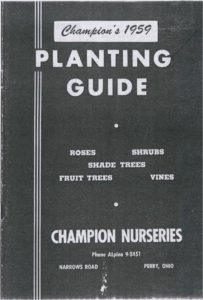 Orchards, farms and nurseries shared busy North Ridge Road in Perry including Resthaven Azalea Farm, Secor’s nursery (1924), Martin’s Nursery (1934), Molnars (1920) and West’s Orchards. Where Middle Ridge Road intersects with North Ridge is the former Champion Farm, site of the first nursery association Summer Field Day in 1972, when the farm was managed by a young Donnie Crawford. Nearby is Red Mill Farm founded by Alex Zebhazy, ‘The Hungarian Philosopher’, and now operated by Herman Losely and Son. (Zebhazy donated over $100,000 to help get the Lake County Historical Society up and running.) With 1000 acres in Lake and Ashtabula Counties, centered on Shepard Road in Perry between the Middle Ridge and South Ridge, Loselys is currently the largest nursery on the east side of Cleveland.
Orchards, farms and nurseries shared busy North Ridge Road in Perry including Resthaven Azalea Farm, Secor’s nursery (1924), Martin’s Nursery (1934), Molnars (1920) and West’s Orchards. Where Middle Ridge Road intersects with North Ridge is the former Champion Farm, site of the first nursery association Summer Field Day in 1972, when the farm was managed by a young Donnie Crawford. Nearby is Red Mill Farm founded by Alex Zebhazy, ‘The Hungarian Philosopher’, and now operated by Herman Losely and Son. (Zebhazy donated over $100,000 to help get the Lake County Historical Society up and running.) With 1000 acres in Lake and Ashtabula Counties, centered on Shepard Road in Perry between the Middle Ridge and South Ridge, Loselys is currently the largest nursery on the east side of Cleveland.
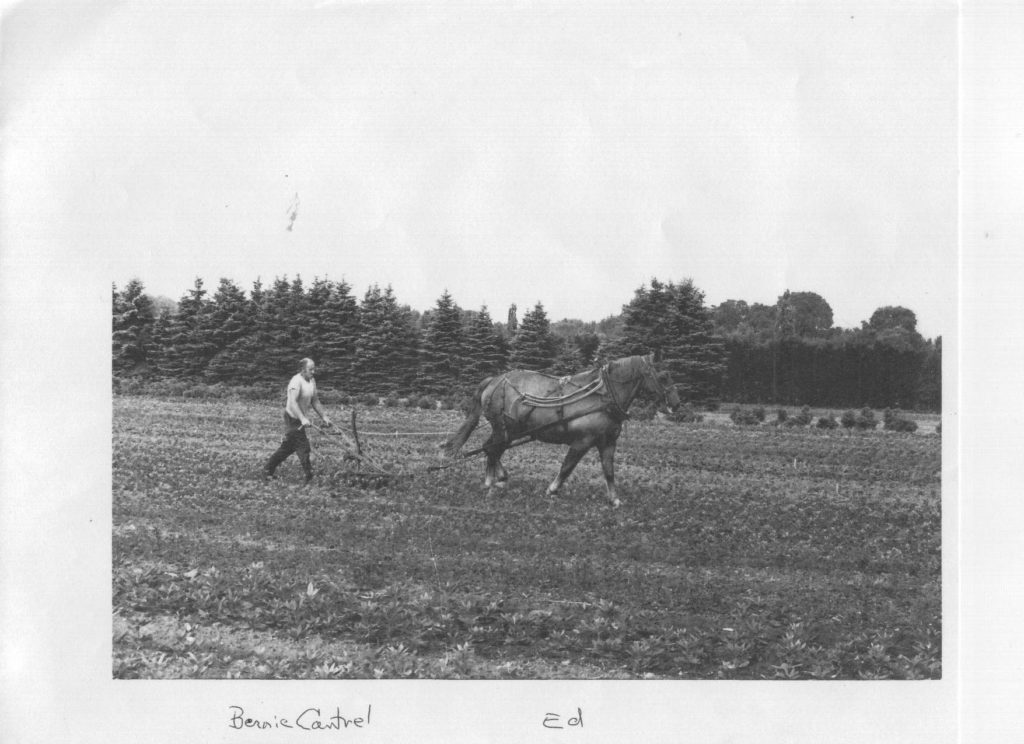
Bob Lyons, nursery icon and founder of Sunleaf Nursery (located on North Ridge Road in Madison, now operated by the Petitti Group), grew up next door to Gilson Gardens in the 1960s and raised old fashioned bleeding hearts in the muck soil below the ridge. The Square brothers, Lester and James, operated on North Ridge near the Painesville line even after construction of Rt 2 cut their nursery in half. Their old rose barn still maintains quiet witness on busy Rt 20.
Painesville, founded in 1805, was an ‘oak opening’ at the time of original European settlement, an open space in the endless woodlands extending from the east coast. Native American fire regime may have been the cause, or a patch of inhospitable glacial till. But the areas around Painesville became the epicenter of this burgeoning industry.
Storrs & Harrison Nursery began on North Ridge Road a few miles east of downtown Painesville. During their meteoric rise in the late 1800s, they developed an unbroken array of fields and facilities on both sides of Rt 20 extending all the way to Lake Erie, much of it on excellent ‘Conneaut Silt loam’. Workers arrived by rail at the ‘Nursery Stop’, children were educated at the ‘Nursery School’ (which still remains as Hale Road School), and immigrants lived nearby in tents in ‘The Italian Woods’ up until 1939. Their clock announced the hours for the nursery and nearby community; their thermometer provided official temperatures, including a dip to 33 below in the winter of 1872/73; and the Painesville Post Office was expanded to regional capacity to accommodate all the nursery commerce.
Myriad ‘lunch box nurseries’ of all sizes sprung up nearby between North Ridge Road and Madison Avenue, including LP Brick’s Nursery, Joe Sabo & Son (later Katila’s), Julius Kohankie Nursery (1913), Merrill’s Nursery, Nichol’s Nursery, Normans, Penn-Ohio Nursery (owned by the Kraynak’s of Sharon PA) Tankovich, Alva Smith’s Nursery, Riggs Nursery and Mike Sebian’s. Nearby on Fairport Nursery Road were the Collavechio’s and more of the Squares. (Giuseppe Scacciavillani immigrated from Italy to Fairport in the 1890s and Americanized his last name to Square.) Others began on Hale Road and Lane Road, including R.F.Hacker Nursery, Paul Otto Nursery (founded in 1937 but liquidated for four years in 1941 when Paul was drafted to serve in the front lines of Europe) and George Otto Nursery.
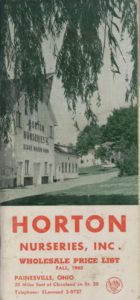 One of five brothers who entered the local industry, Henry Kohankie founded his nursery in 1903 on North Ridge Road in Painesville. Across many fields in local communities, the nursery expanded to over 1000 acres rendering it one of the largest in America. Soil diversity enabled a tremendous variety of crops for which they became famous. At his home in the ‘Cherry Hill’ area off Mentor Avenue (across from Hellriegel’s Restaurant), Henry Jr. established many rare specimen plants for display. Some of the Kohankie fields near Middle Ridge are operated to this day by Herman Losely & Son (1951). Kohankies was sold to Horton Nursery of Mentor in 1954 rendering Hortons the largest nursery in Ohio and fourth-largest in the country.
One of five brothers who entered the local industry, Henry Kohankie founded his nursery in 1903 on North Ridge Road in Painesville. Across many fields in local communities, the nursery expanded to over 1000 acres rendering it one of the largest in America. Soil diversity enabled a tremendous variety of crops for which they became famous. At his home in the ‘Cherry Hill’ area off Mentor Avenue (across from Hellriegel’s Restaurant), Henry Jr. established many rare specimen plants for display. Some of the Kohankie fields near Middle Ridge are operated to this day by Herman Losely & Son (1951). Kohankies was sold to Horton Nursery of Mentor in 1954 rendering Hortons the largest nursery in Ohio and fourth-largest in the country.
The North Ridge splits in two as it passes through Painesville, one portion continuing along Mentor Avenue and another defining the busy nursery strip of Jackson Street. The 60-acre farm belonging to JJ Harrison’s father in 1858 was on Jackson Street. Others over the years included Elmdorfs (1904), Youdath’s (1920), Joseph Martin Nursery, Kovacs Nursery, Waldorf Nursery, Ed Sabo Nursery and Lou Bartish Nursery.
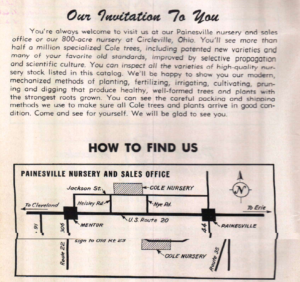 Cole Nursery began in 1881 on Rt 20 in Painesville, east of the Fairgrounds and railroad tracks (later the site of Colony Lumber). The WWII years were difficult for local nurseries and Coles converted their 600-acre-operation to food production. After the war they moved to Jackson Street encompassing 238 acres on both sides of the road from Nye Road to Heisley Road. This farm was almost entirely comprised of ‘Tyner loamy sand’ on gentle slopes, excellent for nursery production when accompanied by summer irrigation. The Cole residence was located at Jackson and Heisley, as was the specialty rose nursery of Joe Kern (1941) who promoted ‘Roses of Antiquity.’
Cole Nursery began in 1881 on Rt 20 in Painesville, east of the Fairgrounds and railroad tracks (later the site of Colony Lumber). The WWII years were difficult for local nurseries and Coles converted their 600-acre-operation to food production. After the war they moved to Jackson Street encompassing 238 acres on both sides of the road from Nye Road to Heisley Road. This farm was almost entirely comprised of ‘Tyner loamy sand’ on gentle slopes, excellent for nursery production when accompanied by summer irrigation. The Cole residence was located at Jackson and Heisley, as was the specialty rose nursery of Joe Kern (1941) who promoted ‘Roses of Antiquity.’
Nearby was the world-famous juggernaut Wayside Gardens, formed in 1920 by Elmer Schultz and JJ Grullemans. In 1937 Joseph Havel, salvaged an ornamental greenhouse from the George Ball estate near Gordon Park and relocated it to Havel’s Greenhouse on Mentor Avenue, where it stands today. Michael Horvath, Hungarian immigrant and former City Forester of Cleveland responsible for the Rockefeller and Wade Gardens, founded Mentor Avenue Nursery in 1921 to focus on hybrid roses. Bosley Rose Nursery began on five acres in 1928. Donewell Nursery was founded on Mentor Avenue by Joseph Kallay in 1917. Later he would secure one of the early plant patents for Blaze Rose. (There were six Kallay Brothers and they published a catalog in Hungarian for 44 years!) Other rose specialists preferred the heavier soils a short ways to the south including Wyant’s Rose Nursery (1919) and Jim Schroeder’s Mentor Rose Growers (1956).
Nothing lasts forever.
Gilson Gardens was founded on North Ridge Road in Perry in 1947, located on the site of Werner Nursery. Werner’s was founded by a Polish Immigrant around 1920. He grew lilies and perennials and one of his customers was Storrs & Harrison Nursery, a couple miles away. Werner liked to travel down Blackmore Road after work, less than a mile, and cool off in Lake Erie. One summer day he was swimming there with employees and, tragically, drowned. The nursery was abandoned for a number of years until it was purchased by Ted and Kathy Gilson and Ted’s parents, Edward and Mildred. The parents moved from South Euclid into the nursery residence while Ted and Kathy purchased a home nearby on Hale Road. They sold fruit in the roadside stand for a few years, then perennials and later nursery stock. Ted had worked for Youdath’s Nursery after returning from WW II; later he worked at Mentor Products as a machinist. Ed worked for many years at Bailey Meter Company on Cleveland’s East Side. They continued their day jobs for many years after purchasing the nursery, sometimes preparing cuttings in the morning before heading off for work, sticking them in the greenhouse after they returned in the evening. Along with nearby friends on Blackmore Road, Nicki Moretti, Moretti’s Nursery, and Charlie Beardslee, Beardslee Nursery, they specialized in ivy, pachysandra and other ground covers. (Logan Monroe, Kingwood Nursery, Madison, was another local ground cover specialist.)
The three nurserymen were personal friends and worked together to satisfy large orders. My brothers and I came along in the 1950s, along with boys in the Moretti and Beardslee families. We grew up thinking it normal that all our friends were nursery brats and that nurseries should dominate our local communities. Perry was paradise for kids back then with hundreds of acres of overgrown nursery lands where we regularly escaped all parental supervision. Our Boy Scout Troop 71 was filled with Dugans (3), Secors(2), Gilsons(3), Ottos (2), a Champion and other nursery brats. Even our scoutmaster back then was a nurseryman, Jay Kish, River Road Nursery. Nowadays we would refer to all this as an ‘Industry Cluster’, a symbiotic nexus of industry players, partners and suppliers…but back then we just called it…Perry.
With two older brothers in the nursery the tasks that fell to me were not so much difficult as mind-numbing, like dibbling tiny mollis azalea seedlings into small pots with a re-fashioned fountain pen. I invented ways to avoid work in the nursery after school, like joining the chess team and, later, majoring in English at The Ohio State University. Still, I kept drifting back to nursery employers in Columbus and Denver, so I went back to school and majored in accounting. Hah! But even that didn’t take, so my wife, Kristine, and I returned to the company in 1983 and managed it for the next thirty five years. At one point we ran two florist shops, a year-round garden center, plus a wholesale nursery with a container area and a propagation facility. We employed up to fifty seasonal workers… a total of over 750 throughout those years including many students… and made regular wholesale deliveries in our own trucks from Rochester NY to Indianapolis. (I’m not bragging, I merely seek to convey the level of our insanity…) And yet…they were fun profitable years during which we raised and fledged a pair of our own nursery brats. My father and grandfather had lengthy ‘retirements’ lasting into their eighties during which they doddered around the nursery each day (much as I do now) preparing cuttings and talking with the ladies in propagation. Kris and I have many pleasant colorful memories from a wonderful nurturing community and a vibrant industry…with few regrets. But recent years, since The Great Recession in 2008, followed by a couple brutal winters, have been difficult for local nurseries. Reaching, somehow, our 65th birthdays (and 44th anniversary!) in September 2017, we decided, with approval from the rest of the family, to close the book on Gilson Gardens. Kris works now for a florist shop in Mentor and I seek to resurrect my brief career in accounting! But we always want to stay close to our nursery roots!
The story of local nurseries is a truly American tale of family businesses and dynasties. Statistically, less than 4% of all family businesses survive into the fourth generation. Storrs & Harrison Nursery lasted almost 100 years into the WWII era when the fields north of Rt 20 were sold to the Industrial Rayon Company. Yet Harriet Storrs continued to live at the family residence on Rt 20 across from Fairport Nursery Road until 1957. Three years later upon her death a substantial fortune was donated to The Cleveland Foundation resulting in the formation of the Lake/Geauga Fund which continues important local philanthropy to this day. Wayside Gardens, with fields scattered across Eastern Lake County, succumbed in 1975, but the name was sold to George Park Seed Company in South Carolina and remains associated with high-quality mail-order offerings across the country. In addition, Dick Boonstra, former Wayside manager, formed Bluestone Perennials in Madison in 1972 which remains a national mail-order powerhouse to this day. The Kohankies sold to the Hortons, the Champion Brothers to the Zampinis, various local operations have found a home in recent years under the Petitti umbrella.
With the 1960s came the advent of ‘container growing’ and natural soils became less critical. Availability of affordable workers willing to perform the demanding work became a limiting factor on many traditional labor-intensive nursery tasks. Mega-nurseries rose in the south and west unhampered by winter cold and snow. However, an Economic Impact Survey of nurseries in Lake County performed in 2008 (funded by The Cleveland Foundation) indicated that although the remaining number of nurseries was under seventy, their combined annual sales, mostly at the wholesale level, exceeded $80 Million. Furthermore, the 1300 full-time-equivalent industry workers supported over 4500 jobs in the broader economy.
Challenges remain for local growers, but so do opportunities.
For over 160 years nursery operators have appreciated the ecologies, enterprises and hardworking individuals of Lake County…their footsteps trace a proud and productive legacy alongside the cultivated rows of flowering shrubs, shade trees and hardy perennials…their voices echo across this special and remarkable place to live, work and grow old. Thanks for taking this little nursery tour along our ridges, roads and ancient lakes. We’ve only scratched the surface!
Sources:
- White, George W., Glacial Geology of Lake County, Ohio, State of Ohio Department of Natural Resources Division of Geological Survey, Columbus, 1980.
- Ritchie, A. and Reeder, N.E., Soil Survey of Lake County, Ohio, United States Department of Agriculture Soil Conservation Service, January 1979.
- Edgar, Chad, Lake County Soil and Water Conservation District, April 2018, conversation with Mark Gilson.
- George ‘Josh’ Haskell, local attorney and historian.
- Bob Endebrock, Ohio Department of Agriculture Nursery Inspector (retired)
- James Schroeder, Mentor Rose Growers.
- Perry Historical Society.
- Morley Library.
- Thanks to various additional sources associated with Nursery Growers of Lake County Ohio, Inc.
- Photos courtesy of Perry Historical Society, NGLCO File and Mark Gilson.
 Mark Gilson is a third-generation nurseryman and past-president of Nursery Growers of Lake County, Ohio. Visit: http://gilsongardens.biz/category/marks-corner/
Mark Gilson is a third-generation nurseryman and past-president of Nursery Growers of Lake County, Ohio. Visit: http://gilsongardens.biz/category/marks-corner/
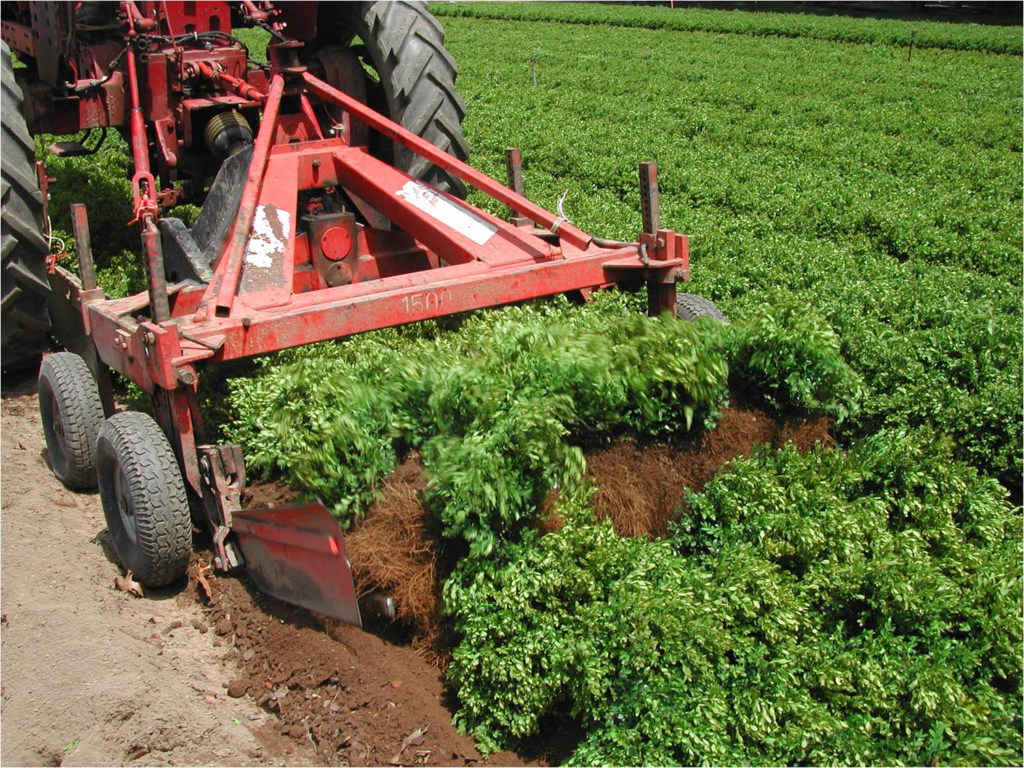
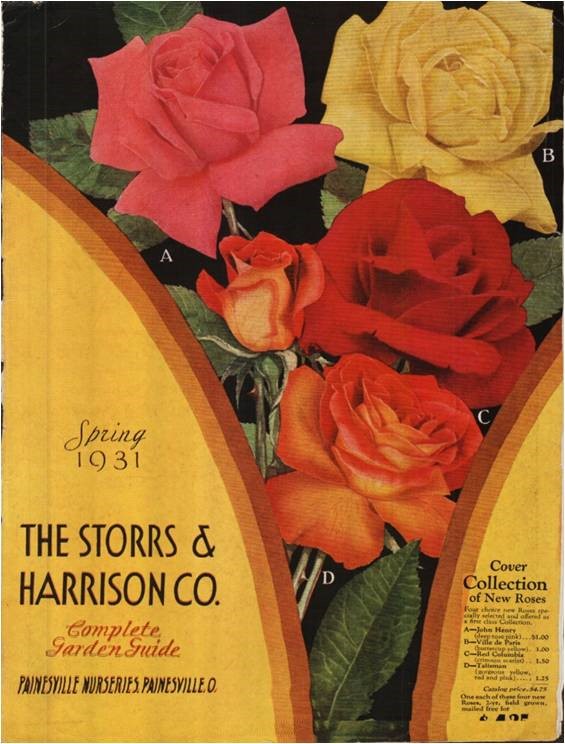
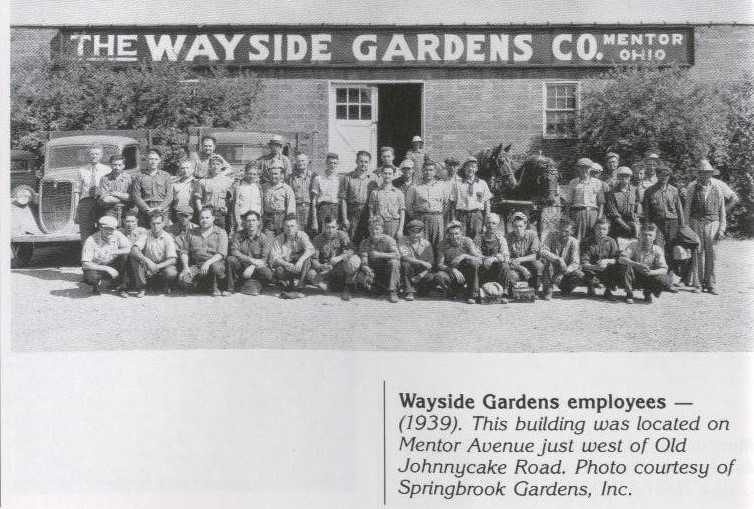
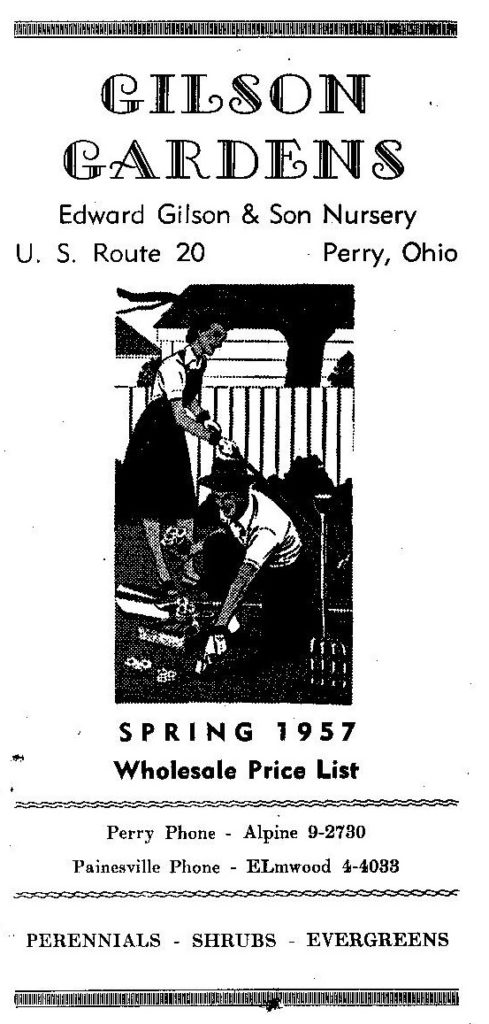

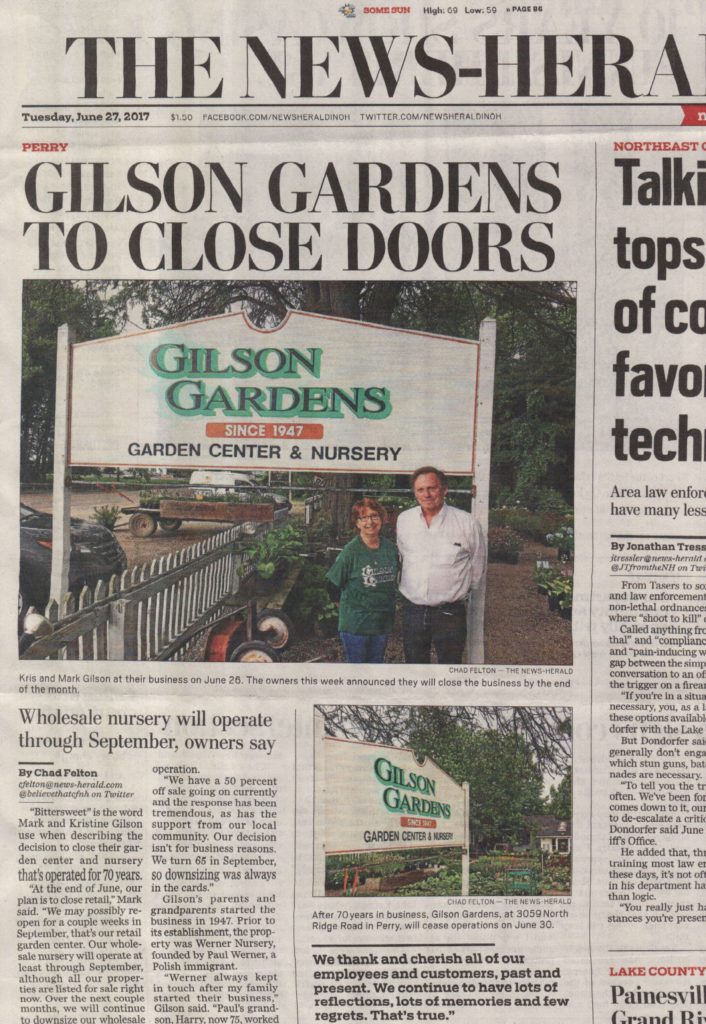
I greatly enjoyed the tour. Thanks for plugging me in!!
Wonderful post! I love the image of “nursery brats” escaping into the overgrown nursery lands.